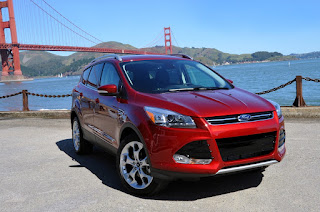Mark Glover’s AutoGlo
car reviews also can be seen on the business page of The Sacramento
Sacramento, California – I’ve now been in every version of
the Toyota Prius, and when it comes to the Prius Plug-In, think of it as the
original Prius with a boost.
Electrical boost, that is.
You can win a few bar bets by asking folks which car model
is the best-selling one in California
in 2012. It’s the Prius. Yes, I’m serious. Not the Camry, not the Civic, not the Accord,
not the Focus, not the Ford F-Series pickup.
Sure, California
is eco-friendly and a massive market, but it’s more than that. The Prius now comes in so many flavors that
just about anybody will be pleased and get the additional perk of good gas
mileage in the fuel-pricey Golden
State
For those who seriously want to stretch the gas money, this
Prius Plug-In is going to be your cup of Texas
tea.
With the Plug-In, you get the basic benefits of the
50-miles-per-gallon Prius liftback, but you also have the option of extending
your personal economy further with extended electric driving mode.
This is done via a specially installed lithium-ion battery
pack and an external charging cable. A
full charge using an standard external AC outlet takes about two-and-a-half to
three hours. Using a 240-volt charging
station cuts that to about 90 minutes.
Using the gas-electric option at full song pushes the fuel
mileage number to about 95 mpg. Yes, the
feds have a formula for figuring that out.
No matter what, you can figure on bypassing the fuel pumps with
regularity.
I must say that I was thrown off by using the external
charging cable on this Prius after years of telling people that the Prius
hybrid was one you didn’t have to plug in.
Simply put, this Plug-In is the Prius you plug in. Seems easy enough to
remember.
From there, it’s all Prius as usual, which is to say super
technology for a song. The starting
price on the tester was $32,000, which I assure you is a bargain given all the
technology riding on four wheels.
And it’s not stripped.
The tester had a generous list of standard comfort/convenience features
and safety devices. Handling was sharp
and nimble, with zero hiccups in the power delivery systems.
Let’s call it the Prius with a plus, which means long-term
fuel savings for the owner.














